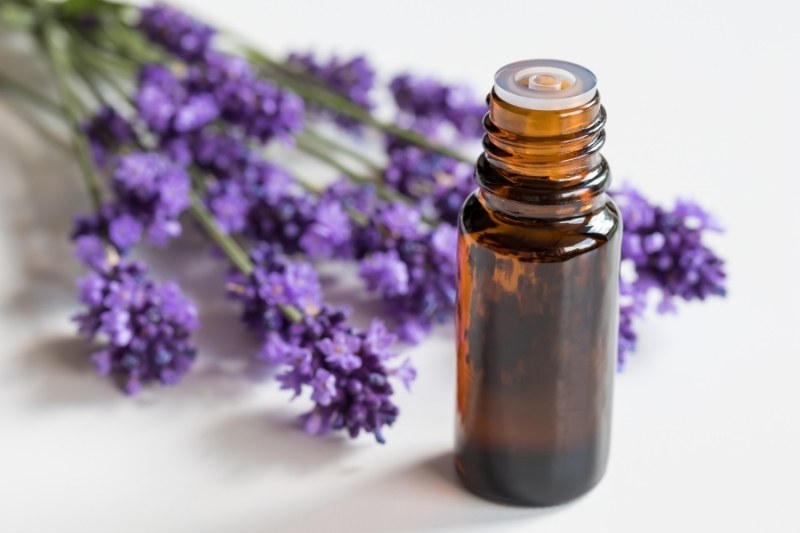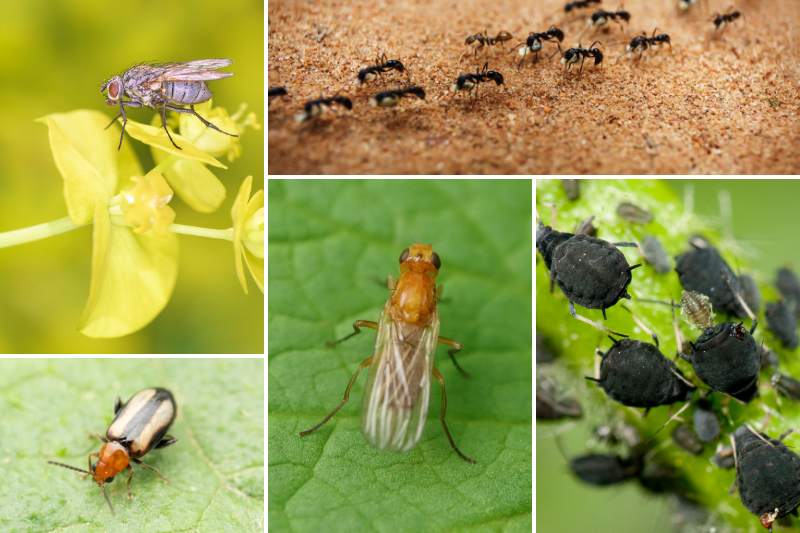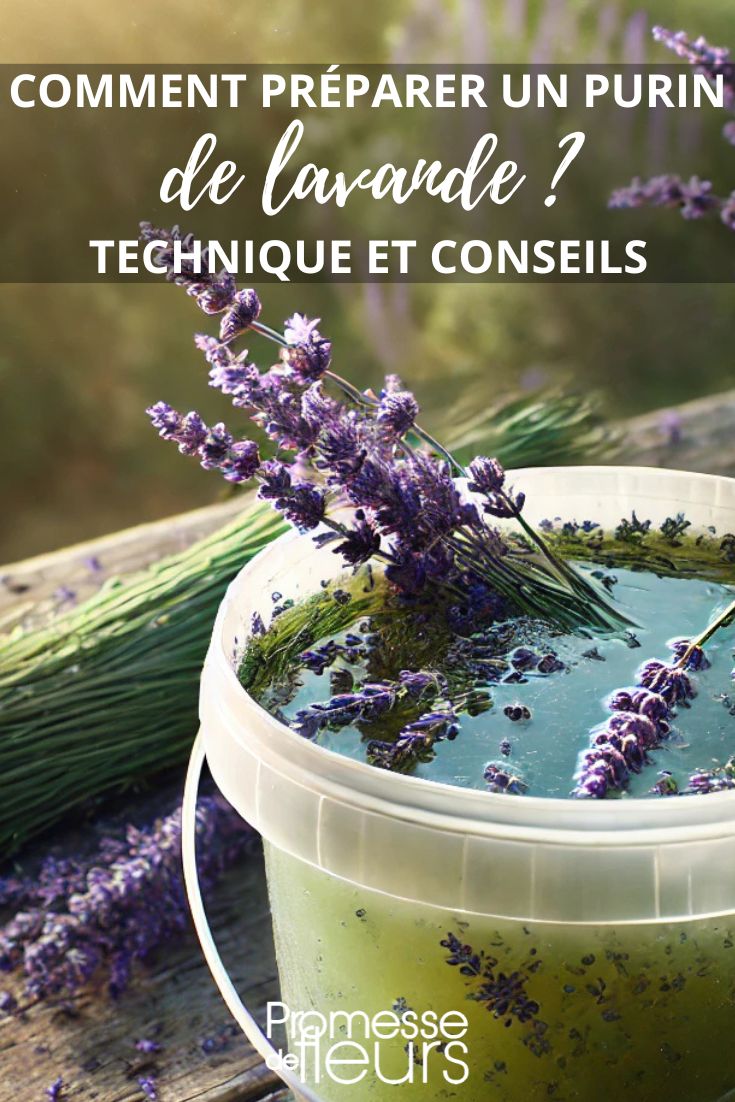Lavender, emblematic plant of the South, you love it for the scents it emits in the garden throughout summer. Each year, harvesting stems of this aromatic plant is a ritual to make small scented sachets to slip between piles of laundry and clothes in your wardrobe. But lavender is also a powerful magnet for pollinating insects. Planted amid the vegetable patch or garden, it attracts bees and bumblebees, so useful for pollination of flowers. Conversely, some insects are put off by the scent it gives off. Let’s discover how and why to prepare a lavender manure for the good health of your plants.
What are lavender’s properties?
Different species of lavender (Lavandula sp) are aromatic plants with evergreen foliage. Flower spikes, mauve, purple or white, stems and leaves are reputed to be rich in various compounds such as linalool, linalyl acetate, camphor, cineole… from which essential oils are extracted. This richness gives lavender multiple properties, used in aromatherapy, phytotherapy, perfumery and even in cooking.

While these properties and that fragrance are much appreciated by humans, some insects do not share the same tastes! Indeed, lavender plants are known to be effective repellents against certain invasive insects, such as mosquitoes, wasps, hornets and ants. That is why it makes perfect sense to plant lavender around a pool or on a terrace, or to place a pot of lavender on a table, to protect against summer invasions of unwelcome insects. These are precisely the properties exploited when making lavender manure.
How is lavender manure useful in the garden?
Lavender manure is a 100% natural biological control product against pests of ornamental gardens, vegetable patches and orchards. Very rich in essential oils, it is sold ready to use in specialist shops.
However, it is very easy to make yourself if you have several lavender plants, whatever their species. As a reminder, four lavender species are mainly found and cultivated in France: true lavender (Lavandula angustifolia syn. officinalis), spike lavender (Lavandula latifolia), French lavender (Lavandula stoechas) and lavandin (Lavandula x intermedia).
Lavender manure is therefore considered an effective repellent against certain insects such as aphids, ants, but also flea beetles, carrot flies (Psila rosae) that favour root vegetables such as carrot, parsnip, celery, but also chervil, or onion fly (Delia antiqua) which attacks alliums (onion, garlic, shallot, leek).

If used less diluted, it can be an excellent insecticidal and parasiticidal product.
Finally, at season end, it can be added to compost to activate decomposition of waste and therefore ripening.
How to make lavender manure step by step?
As with making nettle manure, comfrey or fern manure, this involves macerating lavender in water.
When to make this lavender manure?
Lavender manure is prepared when flowers contain the most aromatic compounds, i.e. late summer, ideally between late July and late August.
What equipment is needed?
- 500 g stems, leaves and flowers of freshly picked lavender
- 5 l water
- Plastic basin or bucket, or non-rusting metal container
- An old cloth to cover the container
- A pruning shear to cut the lavender
- A clean fine cloth or gauze to filter the manure
- A large wooden spoon or a piece of wood to stir the mixture
- An opaque plastic jerrycan (if you wish to store the manure)
- A funnel
- A pair of gloves.
For this lavender manure it is best to use rainwater. If you do not collect it, you can use tap water. Simply leave it standing in the open air for at least 24 hours so chlorine can evaporate.
Of course, you can make more manure by keeping proportions. For example, for 10 litres water, use 1 kg lavender.
It is preferable to pick lavender in the morning.
Procedure step by step
- Roughly cut stems, leaves and flowers into small pieces to speed up fermentation.
- Place lavender in container and pour in water. To make this easier, you can put chopped lavender into a permeable bag weighted with a stone.
- Cover container with the old cloth so air can circulate.
- Set container in shade, outdoors, in a fairly cool place to avoid putrefaction. Keep mixture out of reach of children.
- Stir vigorously every day with the wooden spoon.
Lavender will macerate slowly. Depending on ambient temperature, maceration can last from 5 to 15 days. The mixture will foam somewhat and form a white film on the surface. Also, when you stir, air bubbles will rise to the surface. Fermentation is complete when the mixture has darkened, no longer foams and no longer releases bubbles.
- Remove lavender debris and add to compost.
- Now filter the manure. Stretch the fine cloth or gauze over a second container and pour the manure through.
- Transfer lavender manure into an airtight jerrycan or into a sprayer if you wish to use it immediately.
Lavender manure can be kept for 2 to 3 months in an opaque container, as light degrades the product. Store in a cool, dark place. Open the jerrycan occasionally to release fermentation gases.
How to use lavender manure?
Used as a repellent, this lavender manure should be diluted. It can be sprayed undiluted as an insecticidal treatment.
If you want to repel aphids, ants and other unwanted insects, dilute lavender manure to 20%, i.e. one part manure to four parts rainwater. Spray this dilution onto foliage of plants you wish to protect.
To eradicate aphids and flea beetles already present, lavender manure can be sprayed undiluted.
Lavender manure is sprayed on all plants attractive to aphids, particularly roses. It is also effective on box, hydrangeas, ericaceous plants, fruit trees and vegetable patch crops.
Note: spray either early morning or late evening to avoid burning wet foliage in sunlight.
































Comments